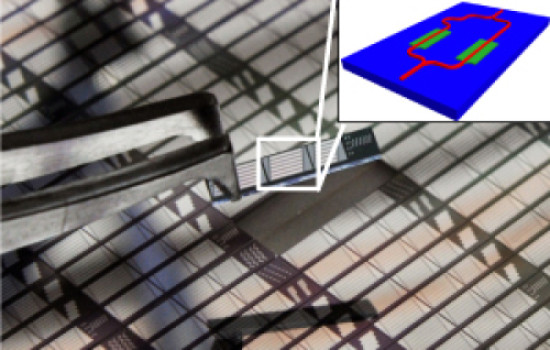
A modulator that converts an electrical signal into an optical signal could enable faster wireless data transmission.
 Wireless transmission at microwave frequencies is important for high-data-rate transmission applications, such as mobile phone networks, satellite links and remote imaging. Now, Xianshu Luo and colleagues from the A*STAR Institute of Microelectronics in Singapore have investigated different designs of silicon modulator that enable fast data conversion from electrical to optical signals.
Wireless transmission at microwave frequencies is important for high-data-rate transmission applications, such as mobile phone networks, satellite links and remote imaging. Now, Xianshu Luo and colleagues from the A*STAR Institute of Microelectronics in Singapore have investigated different designs of silicon modulator that enable fast data conversion from electrical to optical signals.
A key component in a microwave photonic network is the modulator, which converts an electrical signal into an optical signal. "The performance of the microwave photonic system relies on the quality of this conversion, which is determined by factors such as loss, noise and signal distortion," explains Luo. As the modulator acts a bridge between optical components and silicon-based electronics, it should be fabricated on a silicon chip.
The researchers built their modulators according to standard specifications used for semiconductor electronics. A typical modulator consists of two small channels for light -- so-called waveguides -- etched into a silicon chip (see image). Light is fed into a waveguide on the chip, which then splits into two; modulation occurs when these two beams are reunited. If the light passing through one channel is delayed slightly compared to that in the other channel, the signals from both beams will either cancel each other out or reinforce each other. This property is used to generate the '0' and '1' signals for digital transmission.
In silicon modulators, light transmission in one waveguide is delayed by applying a radio signal, which results in electrical charges either being added to or removed from the material surrounding the waveguide. This addition or subtraction of charge modifies the optical properties of silicon.
Modulators based on the addition or removal of electrical charges have different attributes. While the initial injection of electrical charge carriers -- charges that are free to move -- is fast in modulators based on the addition of charges, the carrier recombination takes time, which slows down the overall speed. Modulators that have electrical carriers removed, reducing the nonlinear optical effects, experience less noise in the modulated signals.

 Previous page
Previous page Back to top
Back to top







